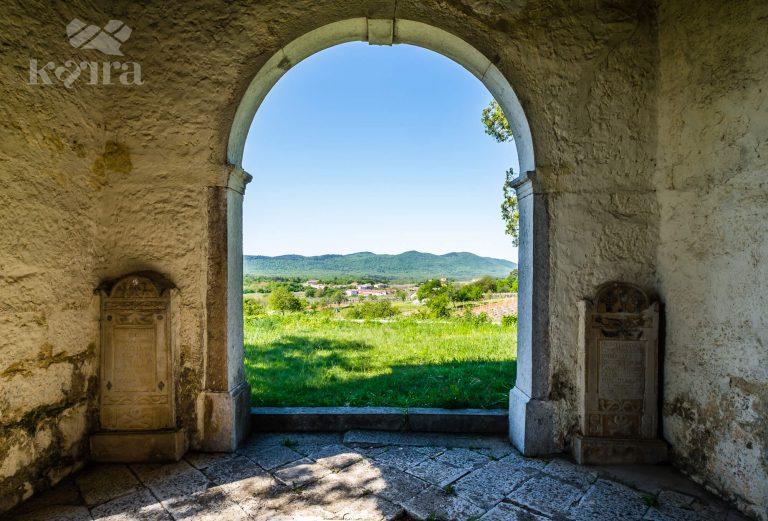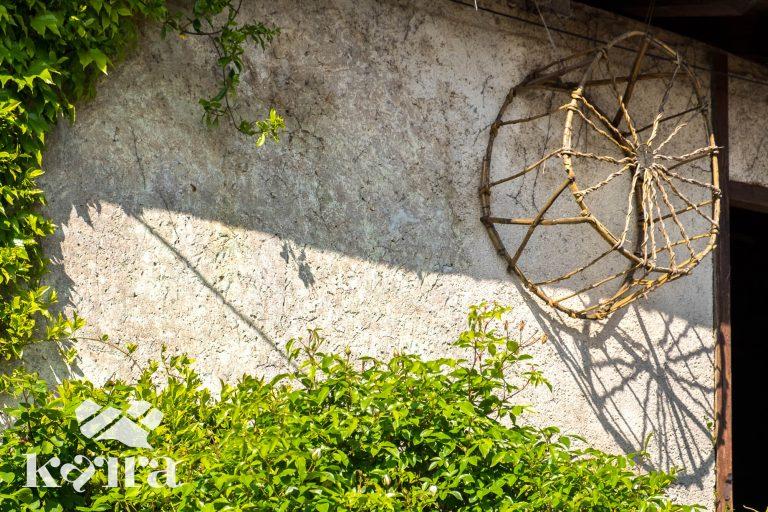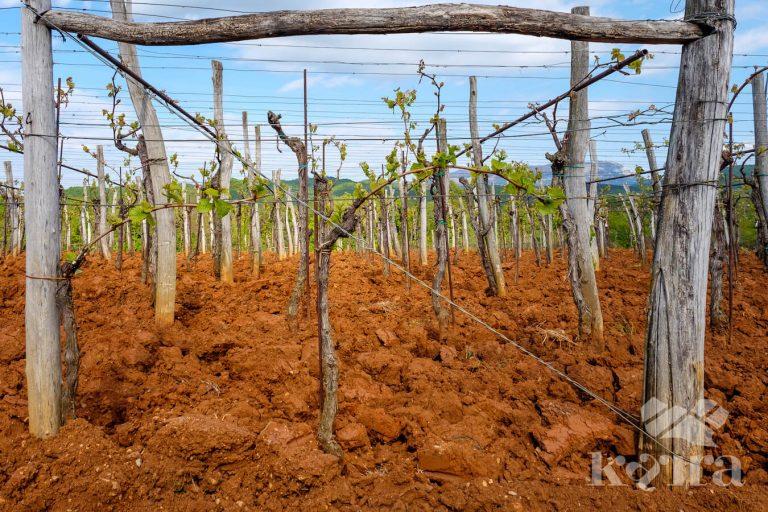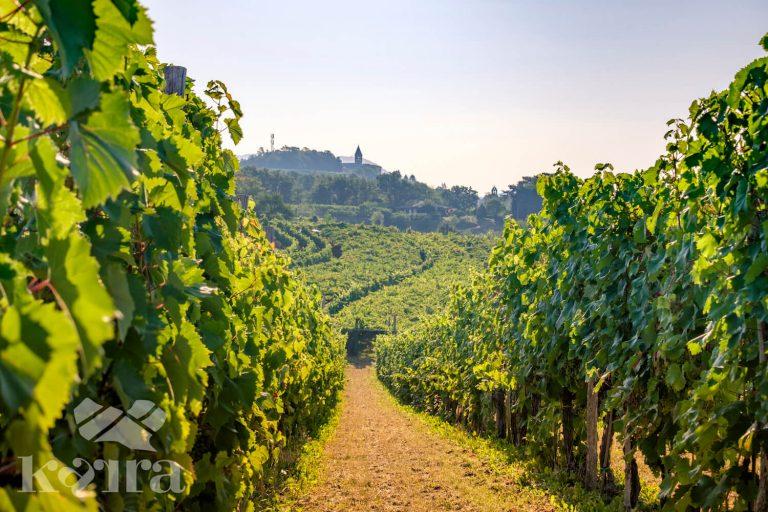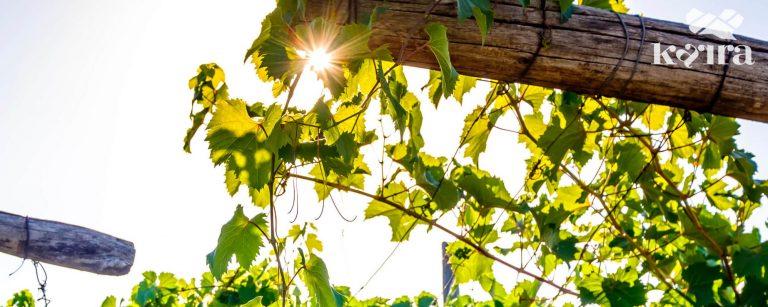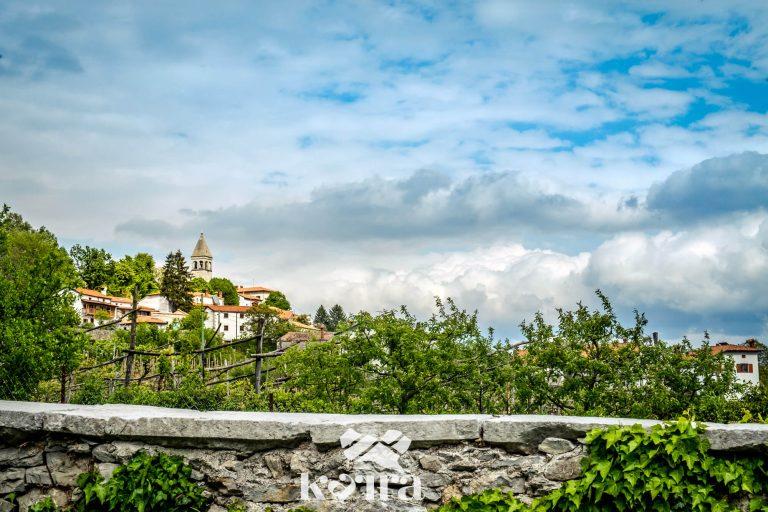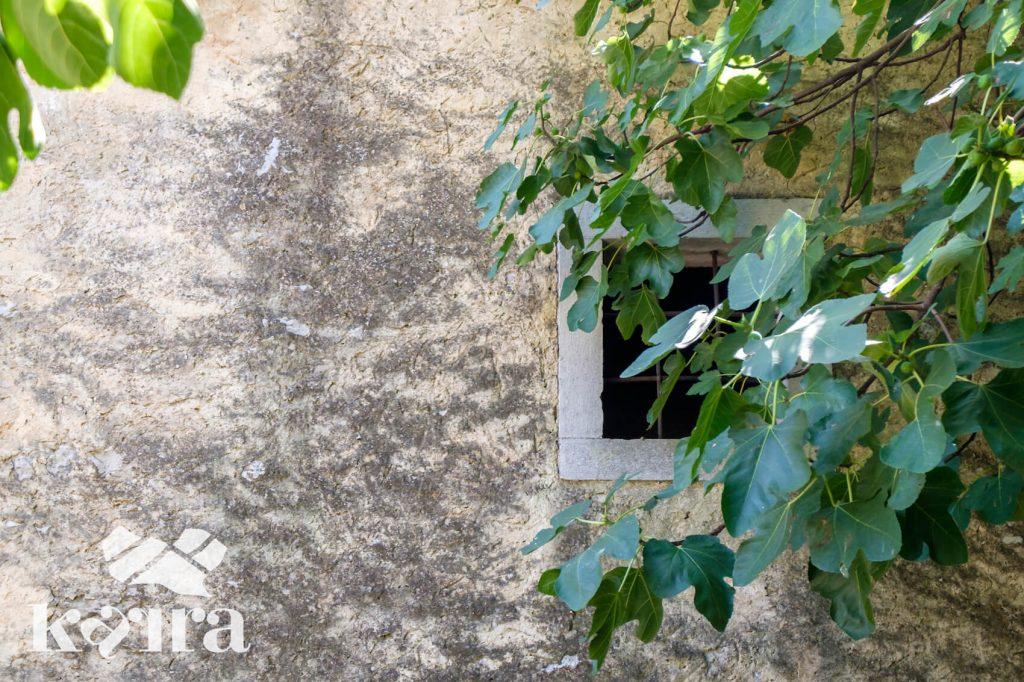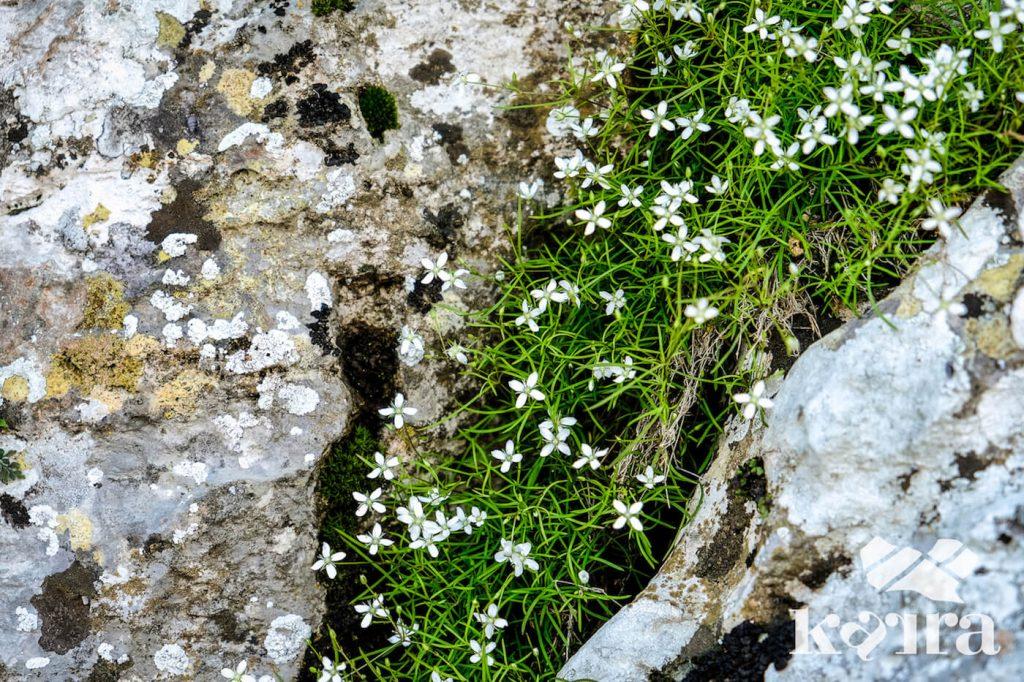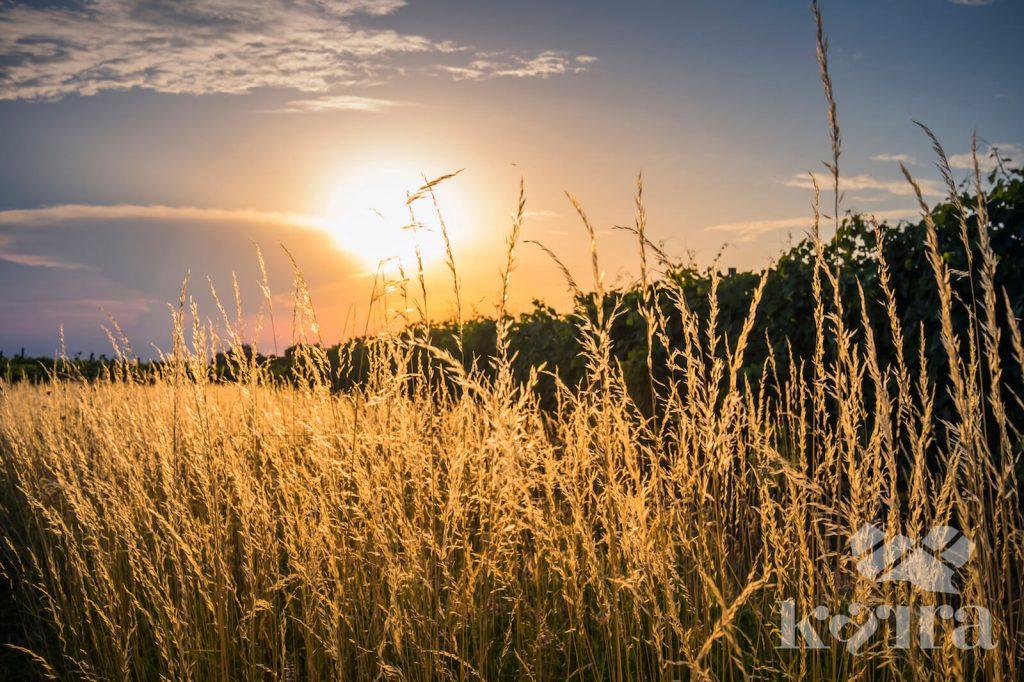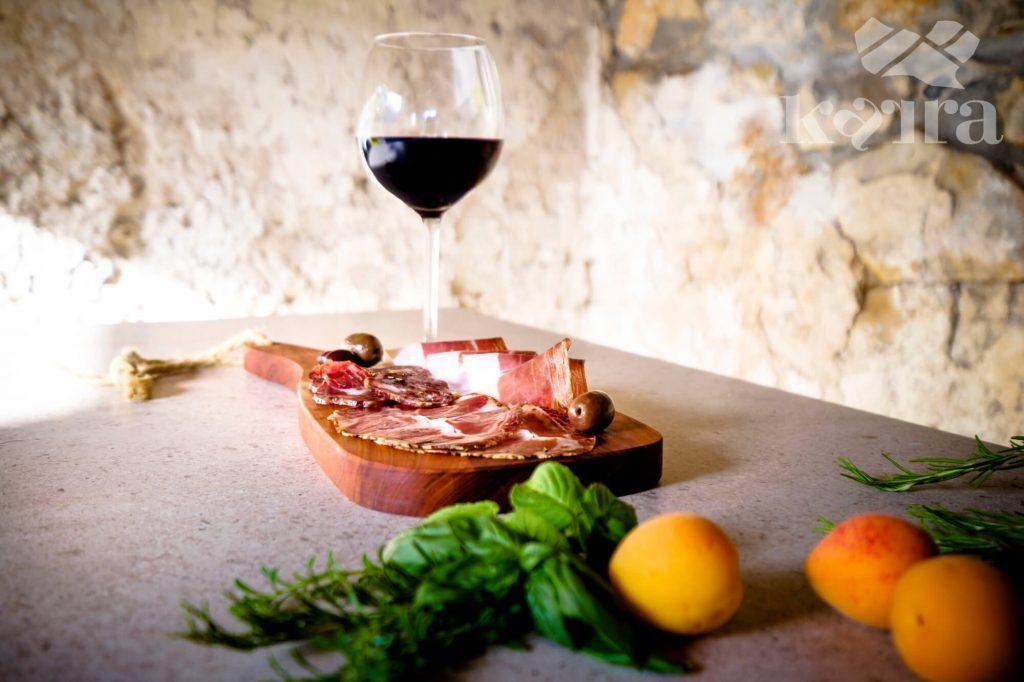Karst
The sea is only a stone’s throw away, right behind the hill. It is brought to us on the back of the southern wind. We get visits from seagulls. And, once in a while, we set off for Trieste, only a few minutes away. If we happen to visit Ljubljana at the turn of the seasons, we usually don’t dress warmly enough. It is mostly sunny here and several degrees warmer than the average Slovenian temperatures. This allows us to enjoy outdoor activities all year long. We cycle, run, take a walk. Or we tend to vineyards, orchards and our own gardens. For most of the year in the Karst, our living and work rooms are located in the open air.
“I don’t know what exactly happens here. But whenever I come to you, everything is different. The air is different – it’s lighter. I am different – somewhat lighter, too. As if I have tossed away a heavy burden I didn’t even know why I was carrying it. Moodiness disappears. The eye focuses on the precious, the insignificant is blurred. The smile becomes broader, spontaneous. You see, I am becoming sentimental! And you know I am not that kind of person! It’s a strange chemistry down here. Magic?”
When our guests and friends ask such a question, we always answer sincerely: “It’s magic, of course, pure magic!”.
The magic of the Karst is undisputable. Most of the Karst world is hidden from our eyes. This is the enchanted underground world, into which Karst brooks and rivers swiftly disappear. A maze of underground caves opens up beneath the surface, full of stunning Karst wonders.
The reason lies in the natural structure of the Karst terrain, made of carbonate rocks. When these come into contact with storm waters, a chemical reaction takes place. Already in the atmosphere and when passing through the rock, rainwater is enriched with carbon dioxide and forms a weak carbonic acid. The acid dissolves carbonate rocks and sculpts breathtaking natural works of art both above and beneath the surface: karst caves, stalactites and stalagmites, sinking streams, depressions, limestone pavements, karren, grooves, runnels and more.
There is a nice term to describe this phenomenon: karstification. The people who live here and the visitors who have fallen in love with the Karst know very well: karstification is a process that also affects people. Will you let the Karst karstify you?
In the past, only a few decades ago, the Karst landscape was much more rocky and barren than today. In the Karst, where stones were abundant and fertile soil and water much too scarce, people (tenaciously) persisted. Giving up was no option. They removed stones from the rocky surface and made new creations from them: dry walls, retaining walls, ice pits, lime kilns, village ponds, houses, farm buildings and stone shrines. This was precisely what motivated the building of all these charming Karst villages, made of local stones, and our famous Karst architecture.
After they ‘freed’ the fertile red soil, the famous jerovica or terra rossa, from beneath the stones, they made fields, gardens and vineyards. The valuable fertile soil was carefully fenced off with dry stone walls to protect it from the north wind burja. Forests were thinned out for pasture land. When the Karst was overgrazed by small cattle, especially sheep, they replanted it.
It has never been easy to make a living in the Karst. Although in the proximity of an important European centre (Trieste), this area has always been somewhat secluded. It lives at its own pace. Heavy industries have never been developed in this area. In the past, the locals generally made a living by farming, while some were craftsmen. That is why today we have inherited an almost intact environment and a life in harmony with the natural state of affairs.
This has left its mark on the Karst people. In the face of all their hardships, they had to be forceful and strong. Yet they managed to keep their romantic soul, the light-heartedness and cheerfulness that are so typical of people who live close to the sea.
The Karst has long been considered a barren, rocky land, whipped up by the burja north wind. Under Austrian rule, forestation took place already in the 19th century. People from the Karst complained because the forests took up their space and the climate started to change. The Karst became more humid and the burja lost its strength. An important turning point for the Karst landscape was the prohibition on sheep and goat breeding after World War II. The land slowly became overgrown with forest, which is still spreading.
Today, the Karst boasts very diverse flora and fauna. It lies on the verge of the Mediterranean world known for its largest biodiversity in Europe. Here the western and eastern Mediterranean faunal regions meet, reflecting both Mediterranean and Continental influences. The intertwining of the Karst grassland, called gmajna, and forest patches enriches the area, giving home to meadow and forest plants and animals.
Not only with forests and gmajnas, the panoramic views of the Karst are also dotted with fields and, certainly, vineyards. As summer winds down and autumn kicks in, they flare up like fire in magnificent colours.
We have inherited thousand-year-old stories, written in various languages, by various nations, cultures and systems, and under different rulers. Due to its location, climate and other natural phenomena, this area was extremely attractive for settlers already in the early Stone Age. The Romans, the Byzantines, the Franks, the Carantanians, the Venetians, the Turks, the Hapsburgs, the Illyrian Provinces, Italy, Germany, the Allied Forces, Yugoslavia and Slovenia.
Always under someone’s rule, but never owned by anyone, one could say about the Karst places and people. Despite heavy pressures and many attempts, people of the Karst have always stood tall. Unbending and ingenious, persevering and intrepid, they have weathered many storms. They became tough and tenacious. Every period in history has left its mark that can now be seen, in one way or another, in a multitude of customs, habits and peculiarities. These are mirrored in today’s cuisine and social life, providing creative people from the Karst with a source of inspiration.
Whichever season you choose to visit us in, you will always unveil a different Karst image. Meeting the Karst in spring is a totally different story than in summer. The autumn explosion of fiery bright colours, displayed by Karst smoke trees and vineyards, is beyond words. You have to see it. We, the local people, also love winters in the Karst. When the rest of Slovenia is covered in a blanket of thick snow or is foggy, most winter days in the Karst enjoy pleasant, sunny and sometimes also slightly windy weather. Karst people call it ‘healthy weather’. It invigorates our bodies and clears our minds. Is this why we, people living in the Karst, are more cheerful and lively than elsewhere? This is true not only for us but also for you, for those who visit us.
The Karst is also a popular destination for the hospitable locals who make products of excellent quality. The Karst is well known for its dry-cured ham prosciutto and Teran wine, while Karst stonecutting also boasts an honourable tradition. Do not hesitate to try out the boutique Karst marmalades, chutneys and tomato sauces as well as delicacies made from Karst goat milk, hemp, lavender and herbs. Be captivated by Karst honey, liquors and brandies. The Karst provides passion-packed inspiration for artists and other creators.
Although slightly remote and unique, the Karst has always been a much sought-after tourist destination. During the Austro-Hungarian Monarchy, it attracted vacationers from across Europe with its serenity, unblemished nature, pleasant climate and high-quality homemade food. Traditionally, the Karst has always been a popular destination for guests from neighbouring Trieste. Noble families from Trieste used to regularly visit the Karst to enjoy restful days, especially madams and young ladies who could spend their entire summer here. This continues today. You will not find hordes of tourists in the Karst but only what you come here for: peace, unparalleled nature, the pleasant climate and the friendly locals.
WELCOME TO THE KARST!
The Karst is magic in all seasons! With us you will experience it much more personally and uniquely. Contact us and we will prepare a custom made Karst experience for you.
Ask usEasily accessible Karst
The Karst can be reached by the highway and many roads; even airports, ports and railway stations are not far away. Distance from the village of Tomaj:
- LJUBLJANA (85 km)
international railway station - TRIESTE (21 km)
seaport, international railway station - SEŽANA (6 km)
inland railway transport
- KOPER (48 km)
seaport, international railway station - BRNIK (99 km)
international airport - RONCHI (50 km)
international airport
- MARCO POLO, VENICE (157 km)
international airport - PORTOROŽ (65 km)
international sports and business airport - DIVAČA (20 km)
sports airport
Treasure hunt in Tomaj 'Victoria's secret'
Book nowTomaj has an air of serenity, but that is only at first glance. But if you think about this – the village has been inhabited for a good 3,000 years and it once was the centre of political, religious, economic, administrative, educational and cultural life – it all becomes clear to you, true treasure hunters, doesn’t it!?
Outdoor escape room 'Escape from gmajna'
Book nowWe will take you to a typical Karst grassland called gmajna; it will enrapture you with its natural beauty. Once you get to the outdoor escape room, you will have to solve Karlo’s puzzles and riddles to find the solution.
Escape room 'Kosovel's enigma'
Book nowIn the centre of our village, in the thrilling escape room, an amazing discovery is awaiting you about this poet, publicist, critic and one-of-a-kind conceptualist and avant-garde mind from the early 20th century. It will surprise those who believe they know everything about Kosovel and those who do not know him yet.
Treasure hunt 'Black cat in Štanjel'
Book now(so far only in Slovenian)
Štanjel, the most atypical, but the most stunning Karst village. Full of contradictions which coexist and form an exciting whole. The black cat will »fatally« drag you into its story. In a 90-minute treasure hunt which will unfold as fast as a blink of an eye, you’ll be left speechless. Yeah, it’s (also) a love story. But don’t take it lightly because there is so much more in it.

